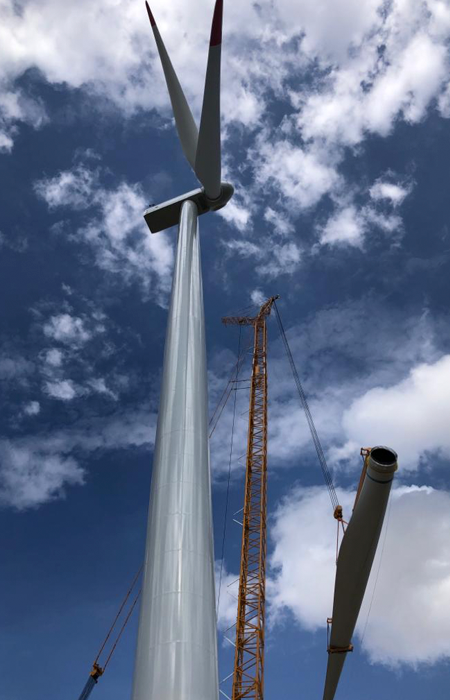Recycling of wind turbine blades
The recycling of wind blades is becoming one of the main challenges of the industry. We manage the entire wind turbine blade recycling process, from transportation to reuse. Recycling of wind blades
Some related jobs:
The challenge of wind turbine blades at the end of their lifetime
When a wind turbine reaches the end of its useful life, which is usually around 20 to 25 years, its components can be replaced or dismantled. Among them, the blades represent a particular challenge in terms of recycling, since they are made of composite materials, such as fiberglass and resins, which are difficult to recycle through conventional processes.
However, the recycling of wind turbine blades is essential to reduce the amount of waste generated and decrease the environmental impact of wind energy, which makes it even more sustainable and respectful of the environment.
Recycling process of wind turbine blades
The recycling process for wind turbine blades can vary depending on the technology and materials used in their manufacture. However, in general, the process follows these steps:
Dismantling and transportation
First, the blades are dismantled from the wind turbine and transported to the recycling point. During this process, precautions are taken to minimize the risk of damage and ensure the safety of workers and the environment.
Crushing and separation
Once at the recycling point, the blades are shredded into smaller pieces. Then, a separation process is used to extract and classify the different materials that make up the blades, such as fiberglass, resins and other components.
Reuse and recycling of materials
The materials recovered from the crushing and separation process can be reused or recycled to make new products. For example, fiberglass can be incorporated into the production of building panels, street furniture, or car parts, while resins can be used in the manufacture of other plastic products.
Innovations in the recycling of wind turbine blades
The wind energy industry and recycling companies are constantly working on the development of new technologies and processes to improve the recycling of wind turbine blades. Some of these innovations include:
More sustainable materials
New materials and designs for wind turbine blades that are easier to recycle and have a lower environmental impact are being investigated. For instance, blades made of biodegradable materials or thermoplastic compounds that can be more easily recycled at the end of their lifetime are being developed.
More efficient recycling processes
Research is also focused on developing more efficient and cost-effective recycling processes for wind turbine blades. These processes may include the use of advanced technologies, such as pyrolysis, which allows composite materials to be broken down into their basic components using high temperatures, or solvolysis, a chemical process that dissolves resins and allows the recovery of fibers.
Circular economy
The adoption of circular economy principles in the wind energy industry can help reduce the amount of waste generated and optimize the use of resources. This involves designing products that can be repaired, reused or recycled at the end of their lifetime, as well as promoting collaboration between manufacturers, wind farm operators and recycling companies to close the life cycle of wind turbine components.
Benefits of recycling wind turbine blades
Recycling wind turbine blades not only contributes to reducing the amount of waste generated, but also offers other important benefits, such as:
- Resource Conservation – By recycling and reusing blade materials, the demand on natural resources is reduced and the extraction of raw materials is minimized.
- Reduced carbon footprint: recycling wind turbine blades and reusing their materials contributes to reduce CO2 emissions and other greenhouse gases.
- Job creation: recycling and the circular economy can generate new employment opportunities in the wind energy industry and in sectors related to recycling and waste management.
- Fostering Innovation: Recycling of wind turbine blades drives research and development of new technologies and more sustainable materials, which benefits both the wind power industry and the environment in general.
Frequent questions
How long do wind turbines last?
Wind turbines have an estimated lifetime of 20 to 25 years. However, its performance and efficiency can be affected by factors such as weather conditions, the quality of the components and the maintenance carried out throughout its life.
What maintenance is given to a wind turbine?
Wind turbine maintenance includes periodic inspections, component lubrication, bolt tightening, repair or replacement of worn parts, and monitoring of the electrical system. Both preventive maintenance tasks are carried out, to avoid possible failures, and corrective maintenance, to repair problems detected.

